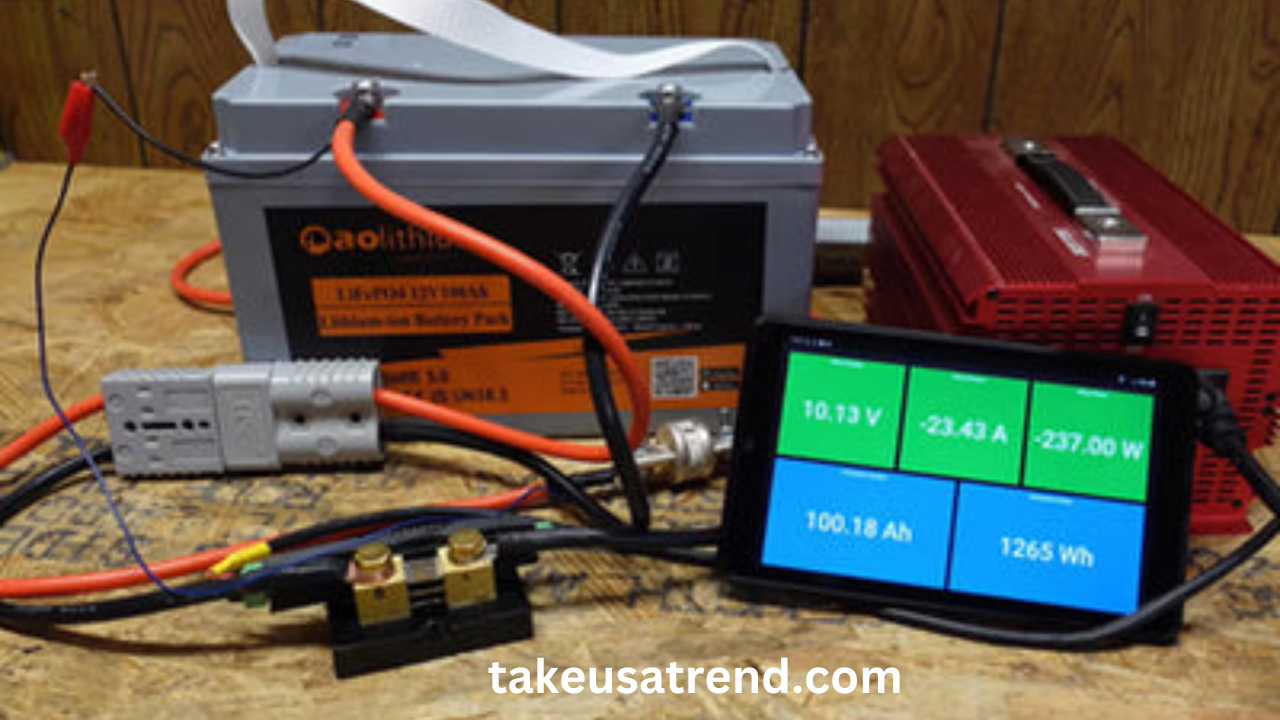

Aolithium 51.2v 100ah Server Rack lithium teardown A Detailed Analysis
The Aolithium 51.2V 100Ah lithium-ion battery is a popular choice for server rack applications, solar energy storage systems, and off-grid setups. It combines high energy density, reliability, and the safety of lithium iron phosphate (LiFePO4) technology. A teardown of this battery offers insights into its internal components, construction, and safety mechanisms. This article provides a comprehensive, step-by-step guide to disassembling the aolithium 51.2v 100ah server rack lithium teardown battery while highlighting the engineering and design principles that make it an excellent choice for energy storage.
Understanding theaolithium 51.2v 100ah server rack lithium teardown
Before diving into the teardown, let’s review the key features of the aolithium 51.2v 100ah server rack lithium teardown. This battery uses LiFePO4 cells, known for their excellent thermal stability, long lifespan, and safe operating characteristics. With a nominal voltage of 51.2V, it consists of 16 cells connected in series (16S configuration), each cell having a nominal voltage of 3.2V.
Key specifications include:
- Capacity: 100Ah
- Energy: 5.12 kWh
- Cycle Life: >4,000 cycles at 80% depth of discharge
- Safety Features: Overcharge, over-discharge, overcurrent, and short-circuit protection
- Form Factor: Server rack-mountable
The design is compact and efficient, suitable for integrating into larger systems with multiple units connected in series or parallel.
Preparation for the Teardown
Disassembling a lithium-ion battery requires caution, as these batteries store significant amounts of energy and can be hazardous if mishandled. Ensure proper safety measures are in place:
- Safety Gear: Wear insulated gloves, safety glasses, and non-conductive tools.
- Discharge: Partially discharge the battery to 20–30% to minimize the risk of electric shock.
- Fire Safety: Work in a fire-safe environment, ideally with a fire extinguisher nearby.
- Workspace: Choose a clean, non-conductive workspace free of flammable materials.
Step-by-Step Teardown Guide
1. Remove the Outer Casing aolithium 51.2v 100ah server rack lithium teardown
The first step is to remove the metal or plastic outer casing. This casing protects the internal components from physical damage, moisture, and dust.
- Tools Needed: Screwdrivers or hex wrenches.
- Procedure: Locate the screws or fasteners securing the outer casing and remove them. Gently lift off the casing, taking care not to tug on internal wiring.
The casing will reveal the internal layout, typically consisting of cells, a Battery Management System (BMS), wiring, and structural components.
2. Identify and Examine the Battery Management System (BMS)
The BMS is the brain of the battery. It monitors voltage, current, temperature, and state of charge (SOC) to ensure safe operation.
- Location: Usually mounted on top or along the side of the cells.
- Components: The BMS includes sensors, a control board, and communication interfaces such as RS485, CANbus, or Bluetooth.
- Inspection:
- Note how the BMS is connected to the cells via balance wires.
- Check for temperature sensors attached to the cells.
- Identify safety components like relays, fuses, or MOSFETs.
The aolithium 51.2v 100ah server rack lithium teardown is critical for protecting the battery from overcharging, over-discharging, and thermal runaway.
3. Examine the Lithium Iron Phosphate (LiFePO4) Cells
The battery consists of 16 LiFePO4 cells arranged in a series configuration. These cells are known for their high cycle life and stability.
- Physical Inspection:
- Note the prismatic or cylindrical form factor of the cells.
- Look for labels indicating cell specifications, including capacity, voltage, and manufacturing details.
- Electrical Configuration:
- The cells are connected using busbars or high-current wiring.
- Inspect for balancing wires that connect each cell to the BMS.
LiFePO4 cells are less prone to thermal runaway compared to other lithium-ion chemistries, making them ideal for energy storage applications.
4. Study the Wiring and Connections
Wiring plays a crucial role in ensuring efficient power distribution and communication between components.
- Power Connections:
- Examine the thick power cables that connect the cells to the BMS and output terminals.
- Inspect the quality of solder joints or crimped connectors.
- Balance Leads:
- Trace the thin wires from the BMS to each cell, used for voltage monitoring and balancing.
- Safety Features:
- Identify fuses, circuit breakers, or disconnect switches designed to prevent overcurrent or short circuits.
Previous article; Specialized Ground control 27.5×3.0 review Tire Grip, Traction, and Comfort Redefined
5. Assess Thermal Management aolithium 51.2v 100ah server rack lithium teardown
Efficient thermal management is essential for maintaining battery performance and longevity.
- Cooling Mechanisms:
- Check for active cooling systems such as fans or passive systems like heatsinks or thermal pads.
- Inspect the placement of thermal sensors, often attached to cells or the BMS.
- Insulation:
- Note any insulation material between cells to prevent electrical short circuits.
Proper thermal management ensures the battery operates within its safe temperature range, even under high loads.
6. Analyze the Structural Components
The battery’s structural design ensures durability and protection against physical damage.
- Mounting Frame:
- Inspect the metal frame or brackets securing the cells in place.
- Note any shock-absorbing materials to protect against vibrations.
- Casing Material:
- Observe whether the outer casing is made of metal (for better heat dissipation) or plastic (for lighter weight).
7. Document Findings
Throughout the teardown, take detailed notes and photographs of each component. Key observations to document include:
- Component brands and specifications.
- Layout of cells and wiring.
- Unique design features or innovations.
Key Components Inside the Aolithium 51.2V 100Ah Battery
After the teardown, you’ll likely find the following components:
- LiFePO4 Cells: 16 high-capacity cells in a 16S configuration.
- BMS: Advanced circuit board with monitoring and safety features.
- Cooling System: Passive or active cooling components.
- Safety Features: Fuses, circuit breakers, or thermal cutoffs.
- Power Distribution: Busbars, wiring, and terminals for energy flow.
Design Insights
The aolithium 51.2v 100ah server rack lithium teardown stands out due to its efficient and safe design. Its use of LiFePO4 cells ensures long cycle life and thermal stability, while the BMS provides comprehensive protection and monitoring. The modular design allows for scalability in server rack and energy storage systems.
Reassembly and Best Practices
If you plan to reassemble the battery:
- Reverse the teardown steps, ensuring all connections are secure and insulated.
- Verify the operation of the BMS and safety features before use.
- Test the battery with a multimeter to confirm proper voltage and functionality.
Safety and Disposal
If any components are damaged during the teardown, they must be disposed of properly:
- Follow local regulations for e-waste disposal.
- Avoid puncturing or exposing cells to heat, as this can cause fire or explosion.
Conclusion
Aolithium 51.2v 100ah server rack lithium teardown reveals the advanced engineering and robust design that make it a reliable choice for energy storage applications. By understanding its internal components, including LiFePO4 cells, BMS, and thermal management systems, users can appreciate the safety and efficiency of this battery.
If you are considering a teardown, remember that safety is paramount. For those interested in the battery’s performance without the risk of disassembly, the Aolithium 51.2V 100Ah battery’s specifications and features speak for themselves as a top-tier energy storage solution.








